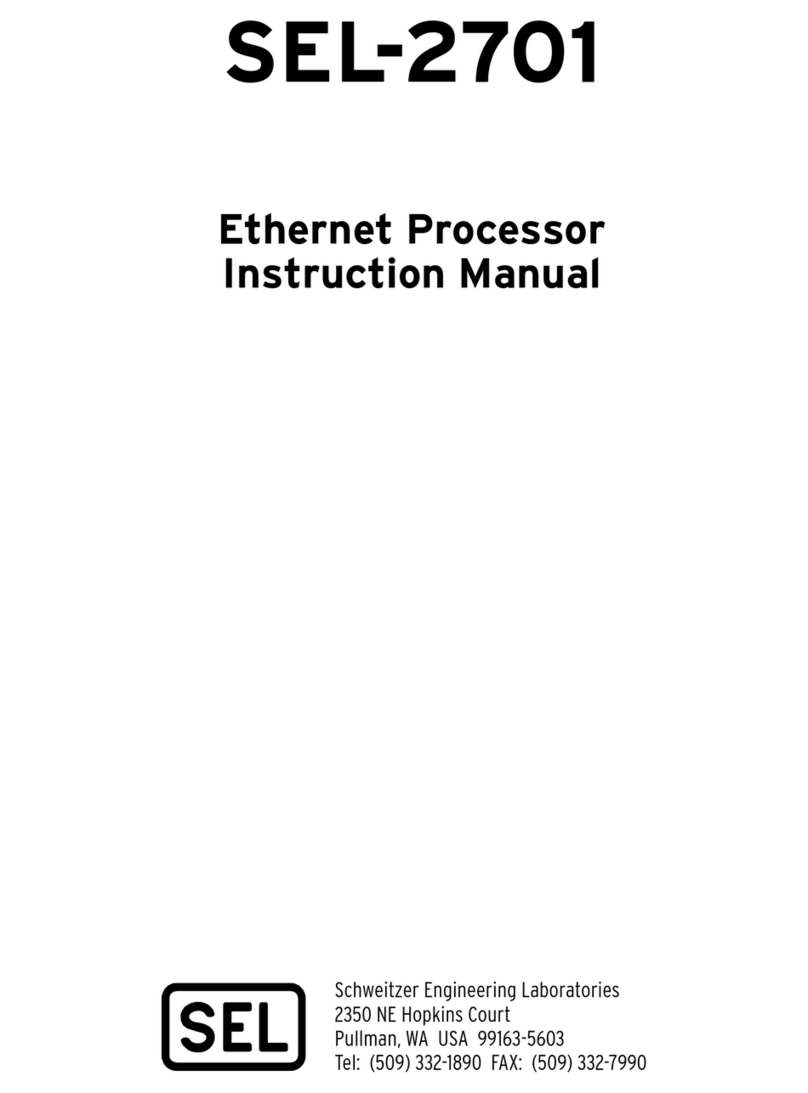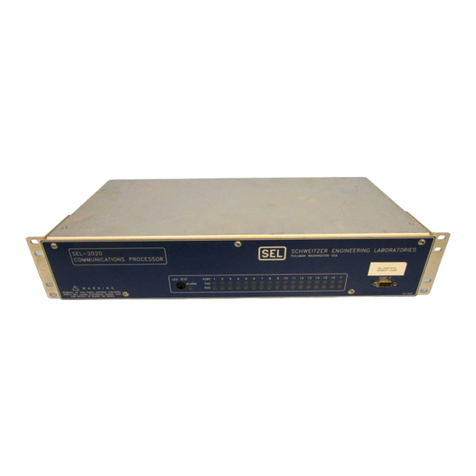
Date Code 980420 Introduction 1-1
SEL-2711 Instruction Manual
SECTION 1: INTRODUCTION
This section provides an introduction to the manual. This section includes a list of references, an
overview of the manual, a list of conventions used within this manual, and a list of acronyms,
abbreviations, and glossary terms.
We, the employee-owners of Schweitzer Engineering Laboratories, Inc., are devoted to making
electric power safer, more reliable, and more economical. The SEL-2711 Modbus Plus Adapter
Card is designed to assist in meeting this objective.
We appreciate your interest in SEL products and we are dedicated to making sure you are satisfied.
If you have any questions about the SEL-2711 or this manual, please contact us at:
Schweitzer Engineering Laboratories, Inc.
2350 NE Hopkins Court
Pullman, WA USA 99163-5603
Tel: (509)332-1890
Fax: (509)332-7990
We guarantee prompt, courteous, and professional service.
We appreciate any comments or suggestions about new products or product improvements that
would help us make your job easier.
REFERENCES
SEL-2030 Communications Processor User’s Guide
SEL-2020/2030 Communications Processor Reference Manual
Modbus Plus™ Network Planning and Installation Guide
MANUAL OVERVIEW
Background Information
This manual is designed to help you make the most effective use of the SEL-2711 Modbus Plus
Communications Adapter. Each section begins with a detailed table of contents followed by a
short paragraph summarizing the main areas of the section. For more information on the
SEL-2030 or Modbus Plus networks, please see the references listed above.
If you are new to Modbus Plus networks you will want to read sections 2 and 3 to get a good
overview of Modbus Plus and of the SEL-2711. If you are already familiar with Modbus Plus
networks, you can skip directly to section 4 and use section 3 for reference.






























